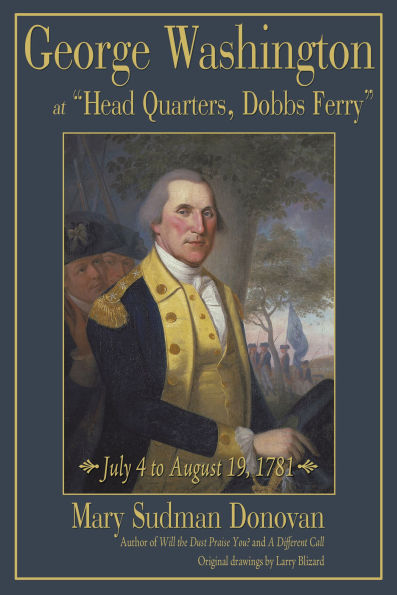George Washington at “Head Quarters, Dobbs Ferry”: July 4 to August 19, 1781
Gen. George Washington faced a myriad of obstacles in the summer of 1781.
In George Washington at “Head Quarters, Dobbs Ferry,” author and historian Mary Sudman Donovan explores this crucial period during the American Revolutionary War by chronicling his activities.
In July, he moved a large contingent of the Continental army to the east bank of the Hudson River near the eastern terminus of Dobbs Ferry. There, on a large expanse known as Philipsburg, he established a joint encampment with the French army commanded by the Comte de Rochambeau, and for the first time, French and American soldiers were trained side by side. They had trouble communicating but used visual signals and universal commands.
Washington and the Comte de Rochambeau created detailed surveys of the surrounding territory, evaluating strategies for invading the British stronghold on York (Manhattan) Island. Washington also corresponded with leaders of the Continental Congress and governors of the various states, imploring them to provide better support in the form of funds, supplies, and additional recruits.
This day-to-day view of Washington as he devised the strategy that led to America's victory, offers a rare insight into the mind of the man Americans chose as their commander in chief.
1146294557
George Washington at “Head Quarters, Dobbs Ferry”: July 4 to August 19, 1781
Gen. George Washington faced a myriad of obstacles in the summer of 1781.
In George Washington at “Head Quarters, Dobbs Ferry,” author and historian Mary Sudman Donovan explores this crucial period during the American Revolutionary War by chronicling his activities.
In July, he moved a large contingent of the Continental army to the east bank of the Hudson River near the eastern terminus of Dobbs Ferry. There, on a large expanse known as Philipsburg, he established a joint encampment with the French army commanded by the Comte de Rochambeau, and for the first time, French and American soldiers were trained side by side. They had trouble communicating but used visual signals and universal commands.
Washington and the Comte de Rochambeau created detailed surveys of the surrounding territory, evaluating strategies for invading the British stronghold on York (Manhattan) Island. Washington also corresponded with leaders of the Continental Congress and governors of the various states, imploring them to provide better support in the form of funds, supplies, and additional recruits.
This day-to-day view of Washington as he devised the strategy that led to America's victory, offers a rare insight into the mind of the man Americans chose as their commander in chief.
9.99
In Stock
5
1

George Washington at “Head Quarters, Dobbs Ferry”: July 4 to August 19, 1781

George Washington at “Head Quarters, Dobbs Ferry”: July 4 to August 19, 1781
9.99
In Stock

Product Details
| BN ID: | 2940191221502 |
|---|---|
| Publisher: | iUniverse, Incorporated |
| Publication date: | 08/26/2009 |
| Edition description: | Unabridged |
Videos

From the B&N Reads Blog
